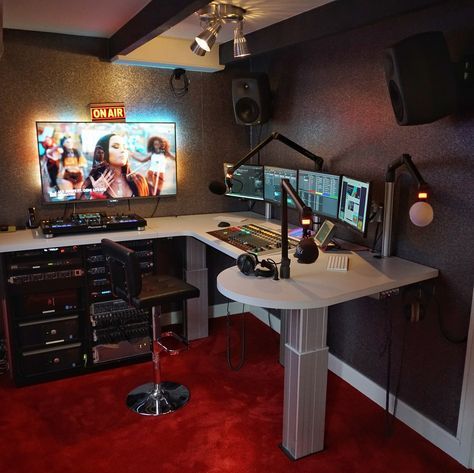
Computer Setups for Live Podcasting
Introduction
Live podcasting has become increasingly popular in recent years, allowing podcasters to connect with their audience in real-time and provide an engaging and dynamic experience. While podcast content is undeniably crucial, the technological aspect of hosting live podcasts plays a significant role in ensuring a seamless and professional production. In this article, we will discuss essential computer setups for live podcasting.
1. A Reliable Computer
Having a robust and reliable computer is the cornerstone of any live podcast setup. Opt for a computer with a powerful processor, sufficient RAM, and ample storage space to handle the demands of live streaming audio and video content. Additionally, ensure your computer is equipped with a stable internet connection and the necessary ports to connect your audio recording equipment.
2. Audio Interface and Microphone
The audio quality of your live podcast is crucial to the overall experience. Invest in a high-quality audio interface that allows you to connect professional-grade microphones to your computer. Consider using a condenser microphone for its superior sound capture capabilities. Ensure your audio equipment is properly set up, positioned, and tested before going live.
3. Software and Recording Tools
Choosing the right software and recording tools is essential for a successful live podcasting experience. Look for reliable recording software that supports live streaming and provides advanced editing capabilities. Some popular options include Adobe Audition, GarageBand, Reaper, or Audacity. Familiarize yourself with the software’s features and settings to optimize your recording and broadcast quality.
4. Monitors and Headphones
Having a solid visual display is crucial when managing live podcasts. Consider investing in dual monitors for better multitasking during your live sessions. One monitor can be dedicated to monitoring live chat or other necessary background applications, while the other can focus on hosting your live streaming software and related materials. Additionally, using high-quality headphones will help you monitor audio quality and ensure seamless communication with remote guests.
5. Webcam and Lighting
Visual engagement is increasingly important in live podcasting. While audio is at the core, having a webcam for video streaming provides an extra layer of connection with your audience. Invest in a decent webcam that offers good resolution and low-light performance. To enhance the quality of your video, consider optimizing your lighting setup by using soft lights or a ring light to illuminate your face evenly.
6. Live Streaming Platforms
In addition to setting up your computer hardware and software, choose a reliable live streaming platform to host your live podcast. Popular platforms include YouTube Live, Twitch, Facebook Live, or dedicated podcasting platforms such as Spreaker or Podbean. Research the features, audience reach, and monetization options offered by each platform to determine which aligns best with your podcasting goals.
Conclusion
Creating a successful live podcasting experience requires an optimal computer setup tailored to your specific needs. From powerful hardware to reliable software, investing in the right equipment will help you deliver high-quality live podcasts that captivate and engage your audience. By considering the elements mentioned in this article, you’ll be well on your way to hosting a professional and seamless live podcasting experience.


